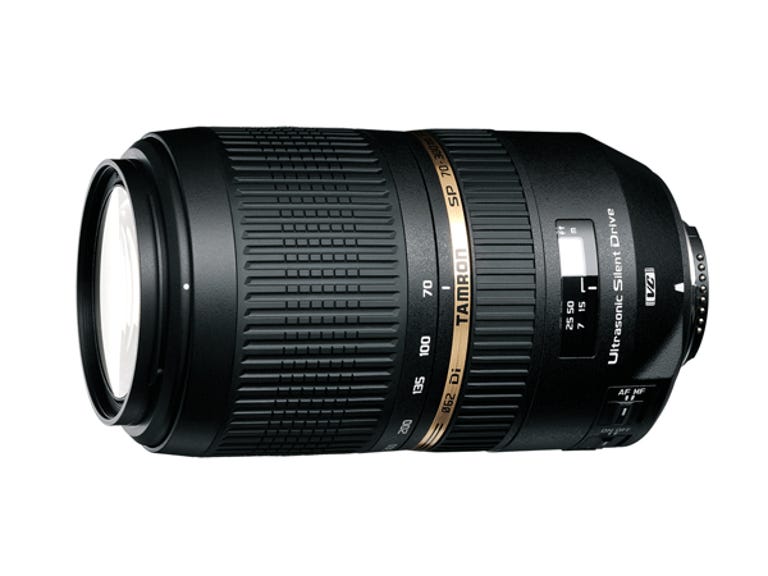 Why You Can Trust CNET
Why You Can Trust CNET Tamron 70-300mm f/4-5.6 Di VC USD review: Tamron 70-300mm f/4-5.6 Di VC USD
The 70-300mm lens from Tamron offers a lot of zoom in a reasonably priced lens, delivering sharp images.
Design and features
For those looking for a cheap alternative to a brand-name telephoto lens, Tamron's 70-300mm could fit the bill. It's definitely no L-series (see the Canon 70-200mm or the Nikon 70-200mm), but at a reasonable price of AU$699 it's definitely not meant to be competing with those high-end hitters.
The Good
The Bad
The Bottom Line
The Tamron comes in three mounts, either Nikon, Canon or Sony, and weighs a hefty 765g. It's designed for full-frame cameras, though it sits comfortably on the front of our test camera, the APS-C sensor-sized Canon 600D. We can imagine that it would swamp smaller SLRs than this, though. The exterior of the lens barrel is made from plastic, with a rubberised focus ring closest to the lens base and a zoom ring towards the front. Internally, the 70-300mm is made up of 17 elements in 12 groups. The lens movement is firm, with a good deal of resistance when zooming in and out. To the side of the lens is an AF/MF and a vibration compensation switch.
In the Nikon and Canon mount, the 70-300mm comes with tri-axial image stabilisation (called vibration compensation). The Sony mount does not, as Sony digital SLRs come with in-body stabilisation. With a minimum focus distance of 1.5m, this lens is not best-suited to macro or close-up work, as it produces images with a magnification of 1:4. Its maximum aperture of f/4-5.6 throughout the focal length range also limits its usefulness for shallow depth-of-field effects. Filters with a diameter of 62mm can be attached to the front of the lens thread.
Performance and image quality
As expected from previous Tamron lenses we've tested, the 70-300mm is an impressive performer for not too much money, particularly for those who are looking for a cheaper alternative to the brand-name lens equivalent.

The Tamron 70-300mm is a sharp lens, particularly at the 70mm focal length. The 100 per cent crop is inset. (Credit: CBSi)
During testing (after about 40 shots) our review unit started to make squeaking noises from the autofocus motor. While this did not affect the performance of the lens or the mechanism in any way, it definitely sounded worse for wear. We received another review unit that functioned normally and did not exhibit this same issue, so we're putting this one down to an isolated incident rather than a manufacturing issue across all of these lenses.
Vignetting visible at both ends of the focal length range. (Credit: CBSi)
Up until we started to experience the noise issues with the first lens, though, it performed very well, with responsive and near-silent autofocus in adequate lighting. The lens is pretty sharp through most focal lengths, though it is sharpest from 70-150mm — as is regular behaviour for most telephoto lenses. Bokeh is not particularly smooth, and in bright situations, some backlit scenes can appear hazy.
A sample image taken with the 70-300mm. (Credit: CBSi)
Tamron's image stabilisation is excellent, with the difference between having vibration compensation switched on or off being incredibly noticeable. It's possible to get a steady shot at 1/10 of a second, sometimes even slower, with the vibration compensation turned on.
Conclusion
The 70-300mm lens from Tamron offers a lot of zoom in a reasonably priced lens, delivering sharp images.


